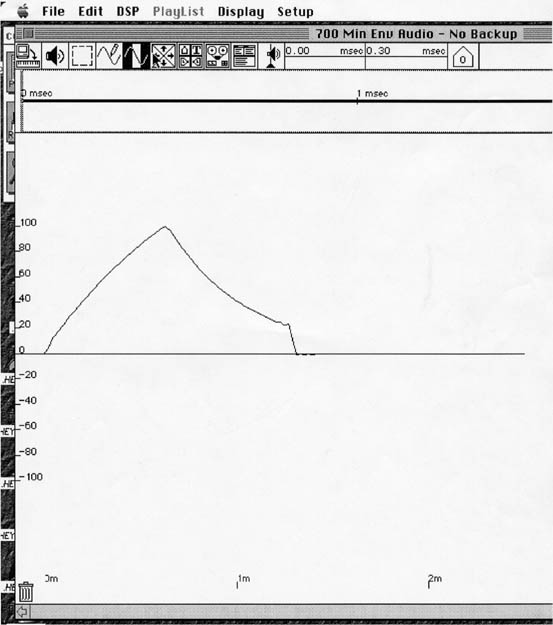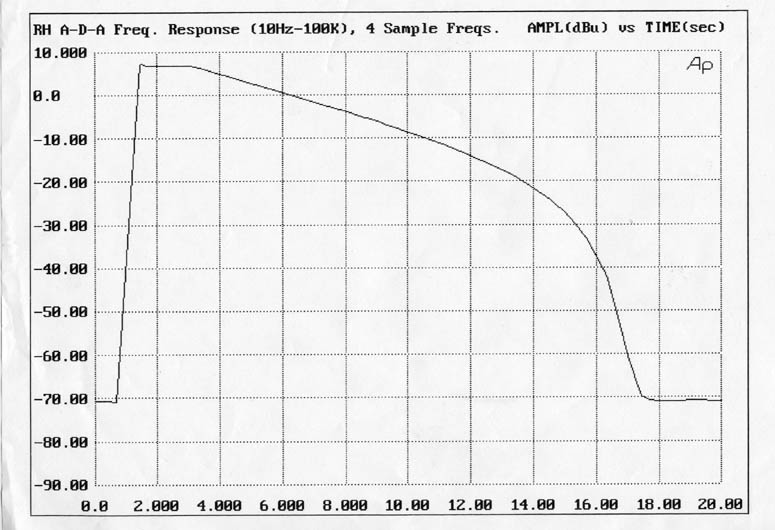While developing the Andromeda A6, we tested many vintage synths to gain insight into their particular magic. Here are graphed responses to the envelopes in the Roland System 700 and the Oberheim SEM. I believe they are both readings of the output amplitude curve. The 700 was set to minimum time settings to see how fast it was (much faster than the Minimoog, for example). The SEM shows an amplitude decay curve which is interesting...the ear prefers exponential, as this is how sounds in nature decay, but its opposite, starting slowly then speeding up approaching the end of the cycle, slightly mimics what you hear after compressing or limiting a sound.

The Roland System 700 ADSR set to all minimum times. Total duration is less than 1millisecond. Note that the Minimoog's minimum attack time is about 1 millisecond alone; this is important as hard voltage changes of less than 750 microseconds cause the Minimoog VCA to click.

The vintage Oberheim SEM.
Not all envelopes are the same. We noted that the Roland SH-5 ADSR's decay slope is steeper (begins more quickly) than the Moog's.
The Buchla modular envelopes are typically exponential. The 281 envelope is linear, in that it begins and ends at the same rate, a straight line across a time graph. As with any voltage-controllable envelope however, its slope is thus completely variable from linear to steep regular exponential to its reverse as seen in the Oberheim graph, through routing the voltage output of the envelope back to its VC inputs through inverting attenuators (attenuverters).
Nods to Grant Richter for explaining the last part in his SDIY pages.

The Roland System 700 ADSR set to all minimum times. Total duration is less than 1millisecond. Note that the Minimoog's minimum attack time is about 1 millisecond alone; this is important as hard voltage changes of less than 750 microseconds cause the Minimoog VCA to click.

The vintage Oberheim SEM.
Not all envelopes are the same. We noted that the Roland SH-5 ADSR's decay slope is steeper (begins more quickly) than the Moog's.
The Buchla modular envelopes are typically exponential. The 281 envelope is linear, in that it begins and ends at the same rate, a straight line across a time graph. As with any voltage-controllable envelope however, its slope is thus completely variable from linear to steep regular exponential to its reverse as seen in the Oberheim graph, through routing the voltage output of the envelope back to its VC inputs through inverting attenuators (attenuverters).
Nods to Grant Richter for explaining the last part in his SDIY pages.